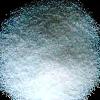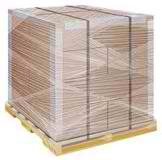SDS of Urea Technical Industrial IP BP Ph Eur USP FCC Food & AR ACS Reagent Manufacturers
CAS Number 57-13-6
Urea Technical Industrial IP BPPh Eur USP FCC Food ACS Reagent Grade Manufacturers.
Urea SDS, Safety Data Sheet
MSDS, Material Safety Data Sheet 12-Sept-22
1. Product Identification
Product Name & Other Names: Urea, Carbamide resin or Isourea or Carbonyl diamide or Carbonyldiamine.
CAS No.: 57-13-6
EINECS EC Number: 200-315-5
Molecular Weight: ;60.06
Chemical Formula: (NH2)2CO
Relevant uses and uses advised against (if any): Industrial use.
2. Hazards Identification
GHS, Globally Harmonized System Classification in accordance with 29 CFR 1910
Classification according to Regulation (EC) No 1272/2008
Not a hazardous substance or mixture according to Regulation (EC) No. 1272/2008.
This substance is not classified as dangerous according to Directive 67/548/EEC.
Labeling according to GHS & Regulation (EC) No 1272/2008
GHS Label Elements NONE |
Signal Word: None
Precautionary statements:
P261: Avoid breathing dust/fume/gas/mist/vapors/spray.
P262: Do not get in eyes, on skin, or on clothing.
P281: Use personal protective equipment as required.
P302+P352 - IF ON SKIN: Wash with plenty of soap and water.
P304 + P340 - IF INHALED: Remove victim to fresh air and keep at rest in a position comfortable for breathing.
P305 + P351 + P338 - IF IN EYES: Rinse cautiously with water for several minutes. Remove contact lenses, if present and easy to do. Continue rinsing.
P337+313: If eye irritation persists get medical advice/attention.
3. Composition/Information on Ingredients
Product Name & Other Names: Urea, Carbamide resin or Isourea or Carbonyl diamide or Carbonyldiamine.
CAS No.: 57-13-6
EINECS EC Number: 200-315-5
4. First Aid Measures
Always get medical attention after the first aid is over.
Inhalation: Remove to fresh air. If not breathing, give artificial respiration. If breathing is difficult, give oxygen. Get medical attention.
Ingestion: Induce vomiting immediately as directed by medical personnel. Never give anything by mouth to an unconscious person. Get medical attention.
Skin Contact: Wash affected areas with soap and water for at least 15 minutes while removing contaminated clothing and shoes. Wash clothing before reuse. Thoroughly clean shoes before reuse. Get medical attention if symptoms occur.
Eye Contact: Immediately flush eyes with plenty of water for at least 15 minutes, lifting lower and upper eyelids occasionally. Get medical attention immediately.
5. Fire Fighting Measures
Fire: Not considered to be a fire hazard.
Explosion: Reactions with incompatibles may pose an explosion hazard.
Fire Extinguishing Media: Use water spray, alcohol-resistant foam, dry chemical, or carbon dioxide. Use means suitable for extinguishing surrounding fire.
Special Information: In the event of a fire, wear full protective clothing and NIOSH-approved self-contained breathing apparatus with full face piece operated in the pressure demand or other positive pressure mode. At high temperatures under fire conditions, it may produce toxic or irritating fumes. Fire-extinguishing work is done from the windward and the suitable fire-extinguishing method according to the surrounding situation is used. Uninvolved persons should evacuate to a safe place.
6. Accidental Release Measures
Personal precautions, protective equipment, and emergency procedures: Avoid breathing dust/fumes/gas/mist/vapors/spray. Use individual protective equipment (waterproof boots, suitable protective clothing, safety glasses, etc.). Do not approach facing the wind.
Environmental precautions: Do not let the product enter drains, soil, or water sources.
Methods and materials used for containment Cleanup procedures and Storage: Contain spilled material. Vacuum or sweep up and remove to an approved disposal container.
7. Handling and Storage
Precautions for safe handling: Apply according to good manufacturing and industrial hygiene practices. Ensure proper ventilation. Wash thoroughly after handling. Do not drink, eat, or smoke while handling. Avoid contact with skin, eyes, and clothing. Minimize dust generation. Avoid breathing dust/fumes/gas/mist/vapors/spray. Keep container tightly closed. Avoid ingestion and inhalation. Use individual protective equipment (waterproof boots, suitable protective clothing, safety glasses, etc.).
Conditions for safe storage, including any incompatibilities: Urea will absorb moisture from air. Store in cool, dry, and ventilated area away from heat sources and protected from sunlight in tightly closed original container. Keep air contact to a minimum. Do not leave the material container open. Store protected from heat, sparks and ignition sources and incompatible materials. Avoid contact with skin and eyes. Avoid inhalation of dust/mist/vapor. Do not store with incompatible materials like sodium nitrite, gallium perchlorate, strong oxidizing agents (permanganate, dichromate, nitrate, chlorine), phosphorus pentachloride, nitrosyl perchlorate, titanium tetrachloride and chromyl chloride. Reacts with hypo chlorites to form nitrogen trichloride, which explodes spontaneously in air. Reacts with nitric acid to form urea nitrate that decomposes explosively when heated.
8. Exposure Controls/Personal Protection
Airborne Exposure Limits:
AIHA Workplace Environmental Exposure Limit (WEEL): 10 mg/m3, 8-hour TWA
Ventilation System:
A system of local and/or general exhaust is recommended to keep employee exposures below the Airborne Exposure Limits.
Personal Respirators (NIOSH Approved):
If the Urea exposure limit is exceeded and engineering controls are not feasible, a half face piece particulate respirator (NIOSH type N95 or better filters) may be worn for up to ten times the exposure limit or the maximum use concentration specified by the appropriate regulatory agency or respirator supplier, whichever is lowest. A full-face piece particulate respirator (NIOSH type N100 filters) may be worn up to 50 times the exposure limit, or the maximum use concentration specified by the appropriate regulatory agency, or respirator supplier, whichever is lowest.
Skin Protection: Wear protective gloves and clean body-covering clothing.
Eye Protection:: Use chemical safety goggles and/or full face shield where dusting or splashing of solutions is possible. Maintain eye wash fountain and quick-drench facilities in work area.
Other Control Measures: Maintain good housekeeping in work area. Handle in accordance with good industrial hygiene and safety practice. Wash hands after handling.
9. Physical and Chemical Properties
Appearance: Urea is white crystals or white powder.
Odor: Develops odor of ammonia.
Odor: Not available.
Odor threshold: Not available.
pH: 7.2 (10% in water)
Relative density: 1.32.
Boiling Point: Decomposes.
Melting Point: 132 - 135C (270 - 275F)
Flash point: Not available.
Auto-ignition temperature: Not available.
Decomposition temperature: Not available.
Upper/lower flammability or explosive limits: Not available.
Vapor pressure: Not available.
Vapor density: Not available.
Evaporation rate: Not available.
Flammability (solid, gas): Not available.
Partition coefficient: n-octanol/water: Not available.
Solubility: Very soluble in water.
Viscosity: Not available.
10. Stability and Reactivity
Stability: Urea is stable under ordinary conditions of use and storage.
Hazardous Decomposition Products: Urea decomposes upon heating and can form products including ammonia, oxides of nitrogen, cyanuric acid, cyanic acid, biuret, carbon dioxide.
Hazardous Polymerization: Will not occur.
Incompatibilities: Urea reacts with calcium hypochlorite or sodium hypochlorite to form the explosive nitrogen trichloride. It is incompatible with sodium nitrite, gallium perchlorate, strong oxidizing agents (permanganate, dichromate, nitrate, chlorine), phosphorus pentachloride, nitrosyl perchlorate, titanium tetrachloride and chromyl chloride.
11. Toxicological Information
Urea Oral rat LD50: 8471 mg/kg. Investigated as a tumorigen, mutagen, reproductive effector.
Carcinogenicity: No component of this product present at levels greater than or equal to 0.1% is identified as possible or confirmed human carcinogen by IARC, ACGIH, OSHA and NTP.
Teratogenic Effects: Not available.
Mutagenic Effects: Not available.
Developmental Toxicity: Not available.
Reproductive Effects: No information available.
12. Ecological Information
Toxicity to fish: LC50 - Poecilia reticulata (guppy) - 17,500 mg/l - 96 h(Urea)
Toxicity to daphnia and other aquatic invertebrates: EC50 - Daphnia magna (Water flea) - 3,910 mg/l - 48 h(Urea)
Environmental Fate: When released to soil, Urea will hydrolyze into ammonium in a matter of days to several weeks. When released into the soil, this material may leach into groundwater. When released into water, this material may biodegrade to a moderate extent. This material is not expected to significantly bio-accumulate.
Environmental Toxicity: Urea can be toxic to domestic animals and has caused poisonings when it was applied unevenly on pastures as a fertilizer. Large amounts of urea can damage plant seedlings and inhibit germination. At high concentrations, urea can be toxic to aquatic life.
Results of PBT and vPvB assessment: This substance/mixture contains no components considered to be either persistent, bioaccumulative and toxic (PBT), or very persistent and very bioaccumulative (vPvB) at levels of 0.1% or higher.
13. Disposal Considerations
Urea is not considered a hazardous waste under USA Federal Hazardous Waste Regulations 40 CFR 261. Follow standard disposal procedures.
14. Transport Information
DOT USA, TDG Canada & ADR/RID Europe: Not regulated.
IMDG/IMO & IATA/ICAO: Not regulated.
15. Regulatory Information
USA Regulations:
SARA 311/312: Immediate health hazard.
California Proposition 65: Not listed.
DISCLAIMER: The information and recommendations set forth herein (hereinafter "Information") are presented in good faith and believed correct as of the date hereof. It is compiled from various sources and it is not necessarily all inclusive nor fully adequate in every circumstance. In addition, these suggestions should not be confused with nor followed in violation of applicable laws, regulations, rules or insurance requirements applicable. This MSDS sheet is intended only as a guide to the appropriate precautionary handling of the material by a properly trained person using this product. Individuals receiving the information must exercise their independent judgment in determining its appropriateness for a particular purpose.

Urea
Urea Technical Industrial IP BP Ph Eur USP FCC Food n AR ACS Reagent Grade Manufacturers:
Muby Chemicals & Associated Cos
BANDEALI BUILDING, CHINCHBUNDER, MUMBAI 400009, INDIA.
TEL: 91-22-23728264. Gujarat & Mumbai India.
info(At the Rate i.e. @)mubychem(dot)com

Copyright and Usual Disclaimer is Applicable
Last updated
12-sep-22

Exports to USA UAE Europe South Africa Tanzania Kenya Uganda Egypt Nigeria Turkey Brazil Chile Argentina Dubai Cameroon Guatemala Mexico etc.
Barter
They who love thee on this earth, keep calling on thee and chanting thy beads
Lest thou forgetest.
They assign the credit of their hard work to your blessings
They keep you amused.
They come to thy temple with baskets of fruits, as if you were a glutton
They deny the same to their children.
They offer you milk for a bath and burn the ghee
They hardly understand the meaning of it.
They bring gold and diamonds. They come with beating of drums
They love to advertise their offerings.
They offer you a small bribe as advance for booty, called lottery
They love to dream.
I do not bow down at your door
I do not bargain for booty
Your promise of the heaven does not lure me
Your hell-fire does not scare me
I do not even know the proper method of prayer
I do not offer any thing to you
Ages have gone by and I have not seen you my lord
Yet my love for you keeps waiting for you.
